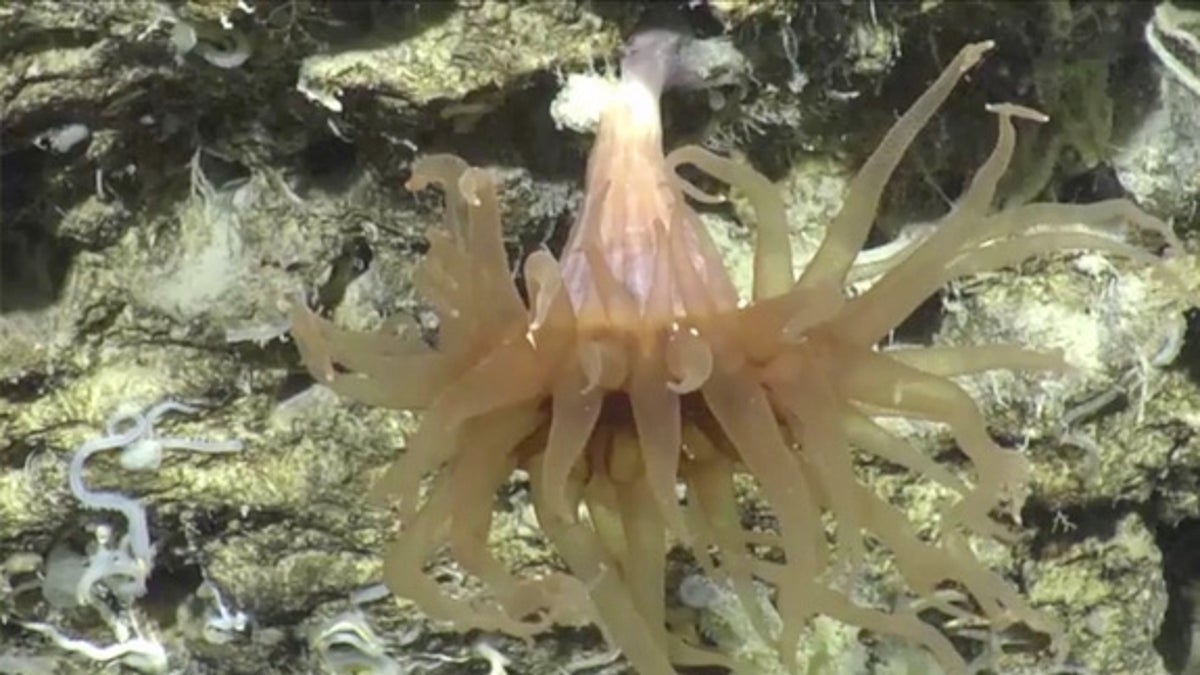
One of the many underwater creatures filmed during the two-week-long mission of Perth Canyon. (University of Western Australia)
A two-week-long seafaring mission off the coast of western Australia has helped illuminate a deep and dark underwater abyss the size of the Grand Canyon.
During the trip to Perth Canyon, researchers encountered countless deep-sea organisms, including Venus flytrap anemones and golden coral. They even found a lost piece of equipment — an autonomous ocean glider that had gone missing two years earlier.
The scientists, from the University of Western Australia's Oceans Institute, began their mission on March 1 on the Falkor, a research vessel owned by an American nonprofit organization. Once aboard, they sailed about 19 miles from Fremantle, a city on the western Australian coast. They then used a remotely operated vehicle (ROV) to explore the underwater canyon, which extends from the continental shelf for more than 2.5 miles to the ocean floor. [Marine Marvels: Spectacular Photos of Sea Creatures]
"We have discovered near-pristine, sheer-drop cliffs of over 1,968 feet and mapped structures that are rarely found in other parts of the ocean," Malcolm McCulloch, the project's leader and a professor of earth and the environment at the University of Western Australia, said in a statement. "It is truly a huge canyon."
The canyon likely formed more than 100 million years ago, the researchers said. Back then, it appears that an ancient river cut the canyon during rifting that separated western Australia from India. Nowadays, the submerged canyon is a hotspot for marine life, attracting blue whales and other sea life in search of a tasty meal.
Researchers knew little about the canyon's structure and the creatures that inhabited it until this expedition. Using the Falkor's cutting-edge mapping systems and ROV, they explored Perth Canyon at depths of more than 1.2 miles. By the end of the mission, the research team had traveled more than 1,118 miles to map the canyon's 154 square miles.
The canyon's deepest point is 2.6 miles below the ocean's surface, McCulloch said.
"It is at a depth where light can’t penetrate, making a dark water column where there are no signs of light from above or below," he said.
Still, the researchers found a surprisingly rich community of deep-sea creatures that cling to the canyon's walls. For instance, about 1 mile below the surface, they found brisingid seastars and mushroom soft corals. Other researchers have documented these animals living in Perth Canyon before, and now these creatures have been found in other deep-sea areas around the world.
The team also used the ROV to collect samples of the deep-sea corals. In the coming months, the scientists plan to determine the coral's age, how fast they grow, and whether global warming or ocean acidification has changed their habitat.
The work may also help other researchers, especially those who study deep-sea ecosystems and the factors that threaten survival in these places, they said.
During the project, the researchers also stumbled across an old piece of equipment — an autonomous ocean glider that went missing while it was exploring the canyon more than two years ago. When the team spotted the bright-yellow glider at a depth of about 0.4 miles underwater, everyone celebrated, said Chari Pattiaratchi, a professor of coastal oceanography at the University of Western Australia.
Next up, researchers will use the Falkor to test underwater robotic vehicles at Scott Reef, off the coast of northwestern Australia.
- Dangers in the Deep: 10 Scariest Sea Creatures
- Infographic: Tallest Mountain to Deepest Ocean Trench
- Colorful Creations: Incredible Coral
- Grand Canyon-Size Underwater Gorge Explored By Submarine | Video
Copyright 2015 LiveScience, a Purch company. All rights reserved. This material may not be published, broadcast, rewritten or redistributed.
